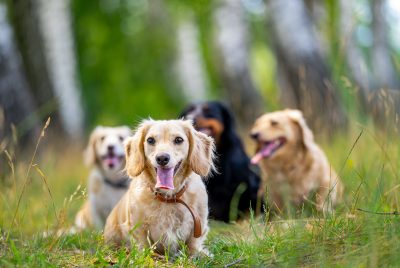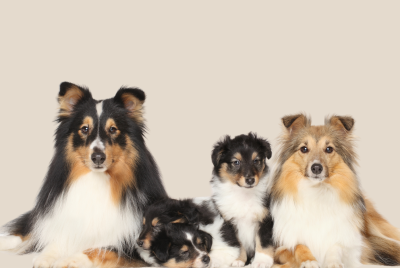How to House Train a Dog? Find Out the Best Techniques!
House training a dog is one of the most important things you need to do as a dog owner. It teaches your furry friends to relieve themselves in an appropriate place, keeping your home clean and odor-free. Proper house training requires patience, consistency and positive reinforcement. The good news is that most dogs can be successfully house-trained with the right techniques and commitment. In this comprehensive guide, I’ll provide tips and advice to help you house train your dog effectively.
What is House Training?
House training refers to the process of teaching a dog to urinate and defecate in a designated area, either indoors or outdoors. The goal is to establish a predictable routine so the dog learns to control their bladder and bowel movements. This prevents soiling inside the house. House training utilizes various techniques like:
- Crate training
- Paper training
- Litter box training
- Confinement training
- Scheduled outdoor toilet breaks
The fundamental principle is to reward desired elimination habits and prevent accidents through supervision and routine. With time, the dog associates relieving themselves in specific spots with praise and learn to inhibit the urge to go inside the house.
Different Types of Trainings
There are various house training techniques dog owners can utilize based on their unique circumstances and preferences. The most popular options include:
Crate Training
This involves teaching the dog to voluntarily enter and stay in a crate or kennel. The confined space encourages the dog to avoid soiling their sleeping area. Crate training utilizes the dog’s natural instinct to keep their den clean. Short periods in the crate are paired with frequent outdoor toilet breaks to establish regular elimination habits.
Paper Training
Paper training involves designating a specific indoor area lined with paper or potty pads for the dogs to relieve themselves on. This is ideal for owners who live in high-rise apartments or can’t regularly take dogs out. The designated area should be easily accessible. Puppy pads with artificial grass can also be used. With positive reinforcement over time, the dog learns to seek out the designated potty spot.
Outdoor Training
This traditional house training method relies on providing the dog with regular opportunities to relieve themselves outside through walks, playtime in the yard, etc. Verbal cues like “Go potty” are used to teach the dog to eliminate on command in the desired spot. Every successful outdoor toilet trip is rewarded with treats and praise. Accidents inside are corrected firmly but gently.
How to House Train a Dog?
House training a puppy or adult dog requires time, diligence, and proactiveness. Here are some key tips:
Establish a Routine
Take your dog out first thing in the morning, after meals, naps, playtime, and every few hours in between. Consistency is key. Adhering to a schedule will teach your dog to expect potty breaks at certain times rather than eliminating them randomly indoors.
Supervise Closely
Don’t give your dog an opportunity to have accidents. Watch for signs they need to go like circling, sniffing or squatting. Leash your dog indoors if needed and use baby gates to restrict access. Confine them when you can’t supervise directly.
Use Verbal Cues
Phrases like “Go potty” or “Do your business” can become trigger words for your dog to eliminate. Use them during outdoor toilet breaks. With time, say the phrase when you want your dog to relieve themselves on command.
Reward and Praise
Celebrate every successful outdoor toilet trip with treats, affection and happy praise. This positive reinforcement is crucial for training. Avoid punishment for accidents – it can impede progress.
Manage Accidents Properly
Thoroughly clean all accidents with an enzymatic cleaner to eliminate odors. Don’t scold or rub your dog’s nose in it – they won’t understand. Gently interrupt and immediately guide them outside if you catch them in the act.
Be Patient and Consistent
House training takes time, especially for puppies under 6 months. Stick to your routine and expect a learning curve of weeks or months. Eventually, your dog will get it right by following your lead.
Best Times for Training
First Thing in the Morning
Dogs usually need to relieve themselves after waking up from a long sleep. Take them out immediately after they wake up to establish a morning routine.
After Meals and Drinking
Food and water intake stimulates dogs’ need to urinate and defecate. Give outdoor potty breaks 15-30 minutes after mealtimes.
Nap Times
Dogs typically need to go after waking up from naps and periods of rest during the day. Take them out directly after to reinforce the habit.
Play Time
Boisterous play can make dogs need to urinate. Give outdoor breaks after play sessions to prevent indoor accidents.
Overnight Stretches
Limit water intake before bedtime and take the last bathroom break right before bed. Most adult dogs can then hold it overnight until morning.
When Leaving Home
Always give a potty break before crating your dog or leaving them alone to avoid messes while you’re gone.
Indoor Trainings
Indoor house training requires designating a specific potty area like a lined crate, pen, or paper-covered section of the home. Some tips:
- Feed treats when they use the area properly to reinforce the behavior.
- Clean accidents thoroughly with enzymatic cleaner to remove odors.
- Limit access to the rest of the home until fully housebroken.
- Transition gradually to outdoor training when they have bladder control.
Outdoor Trainings
Outdoor training relies on building a predictable potty routine through walks, yard time, and praise. Tips include:
- Establish a consistent schedule for outdoor breaks.
- Use a leash to keep your dog focused on pottying in one area.
- Offer treats and affection as soon as they finish eliminating.
- Slowly increase the time between bathroom breaks as training progresses.
- Avoid scolding or yelling if they have an accident. Interrupt, then immediately take them outside.
Frequently Asked Questions
How long does house training take?
For puppies, expect 4-6 months of consistency and patience before they are fully trained. Adult dogs adopted from shelters generally take 2-4 weeks.
What if my dog regresses with house training?
Refresher training may be needed after changes like a new home, baby, schedule switch, etc. Stick to a routine and supervise closely again. Limit freedom until they re-adjust.
Why does my dog have accidents in the house?
Common reasons include not enough supervision, inconsistent schedule, medical issues, inadequate cleaning of previous accidents, or stress and anxiety.
How do I train my dog to use potty pads?
Place pads inaccessible areas of the home. Reward and praise pad usage. Disinfect and replace pads regularly. Gradually move pads closer to the exit for outdoor transition.
Conclusion
House training allows dog owners to enjoy a cleaner home and better-behaved pet. While it requires diligence, especially for young puppies, the effort pays off through improved companionship and a strengthened bond with your furry friend. Consistency, routine, positive reinforcement, and prompt accident management are key. Be patient – with time and persistence, you can house-train your dog successfully.




